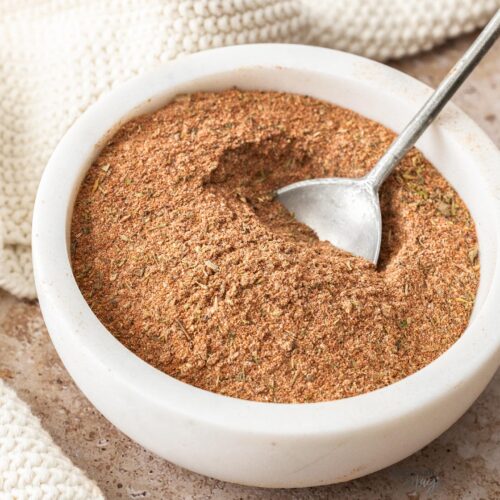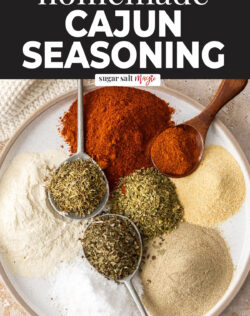Why you’ll love it
Ditch the store-bought stuff and try your hand at my recipe for Cajun seasoning. Packed with flavour thanks to a perfect blend of robust spices, it’s known for its bold savoury and slightly spicy taste. Use homemade Cajun seasoning to add rich flavour and a touch of zing to a variety of dishes.
- It boasts a punchy flavour thanks to the spices, with a fresher, herbal note that comes in from the dried herbs.
- Perfect seasoning mix for a variety of proteins.
- You may also consider adding it to roasted veggies!
- Much better than store-bought.
- Made with pantry spices you likely already have at home.
My Cajun spice mix is great to have on hand for seasoning anything from prawns (shrimp) and salmon to chicken, steak and pork — or even tofu. In fact, Cajun spice is incredibly versatile and pairs well with most proteins.
My recipe is also very versatile, and you can adjust the spice levels as you like. That’s the beauty of making a spice blend at home. You can freely play around with quantities to create the Cajun seasoning recipe of your dreams.
If you’re looking for more varieties to try, check out my fajita seasoning and homemade taco seasoning recipes too.
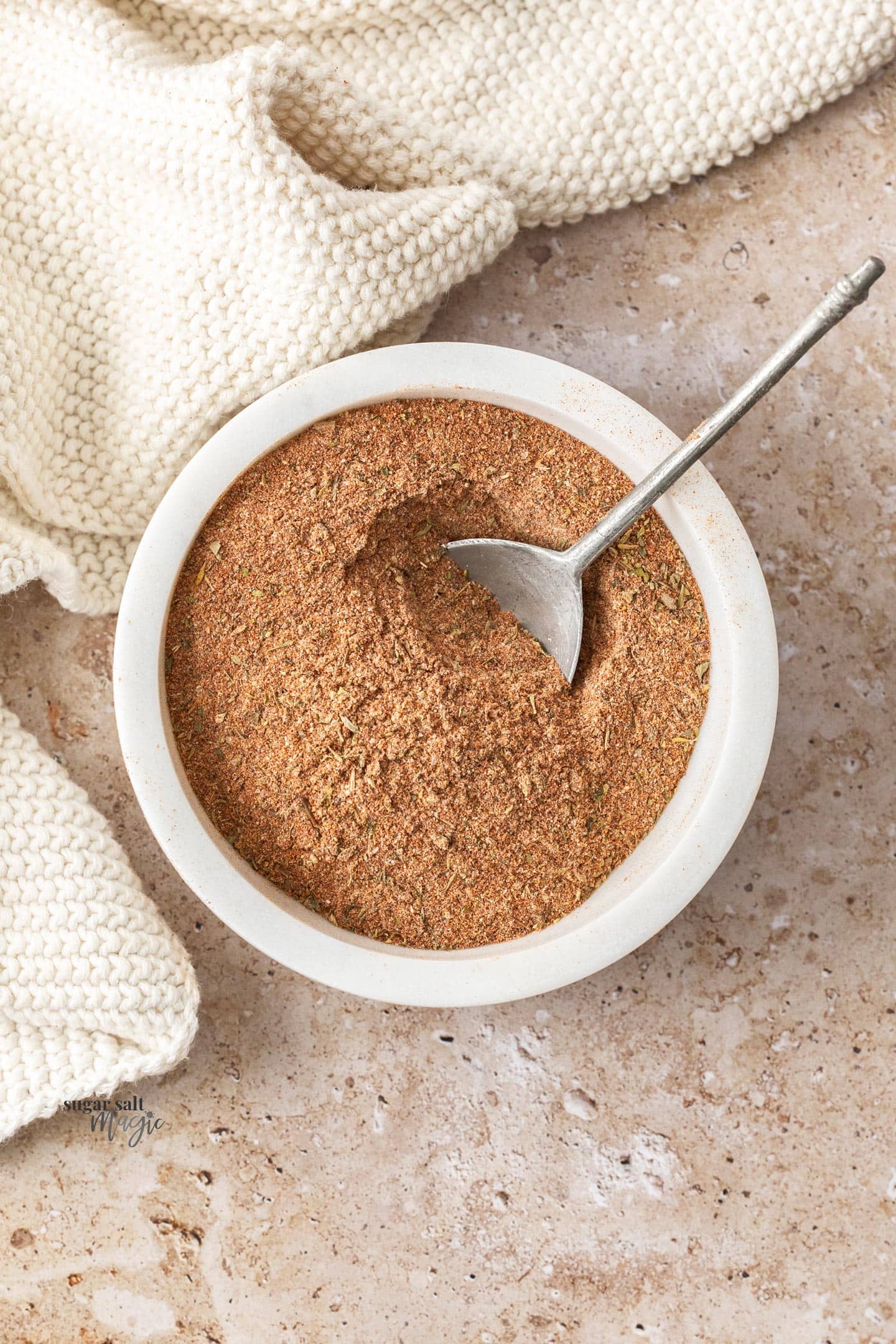
Never Miss a Recipe!
Get the latest recipes straight to your inbox!
Cajun seasoning ingredients
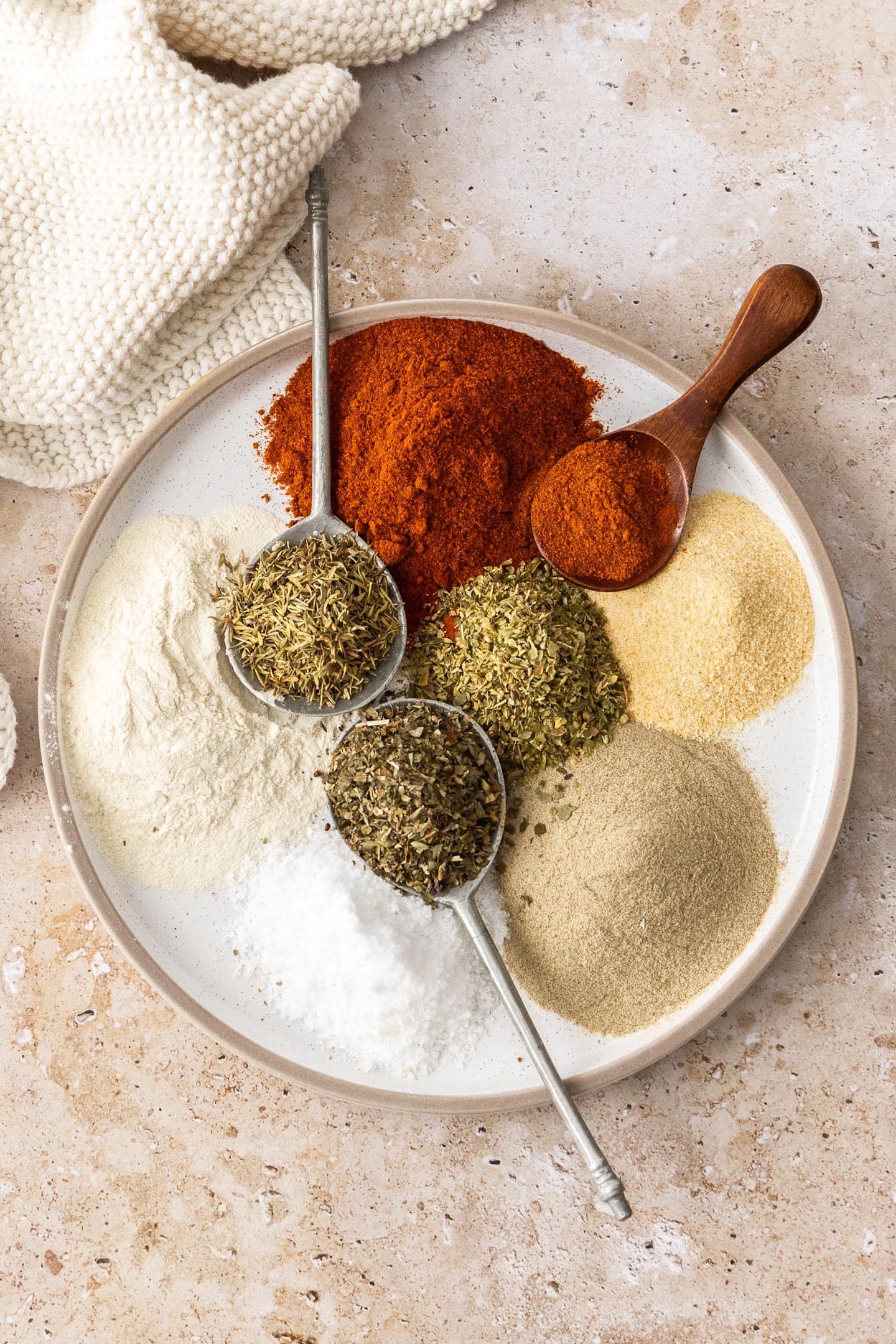
Detailed quantities and instructions in the recipe card below.
- Paprika: I love the flavour and colour that paprika brings to my Cajun seasoning recipe. You can use regular, or try smoky for a more complex taste.
- Ground White Pepper: I use ground white pepper, but you can also use ground black pepper.
- Onion Powder: Pungent, sweet, and a bit earthy.
- Salt: To intensify the flavours of the other spices.
- Garlic Powder: For an even more robust and earthy flavour.
- Dried Oregano: Herbaceous with a hint of citrus.
- Dried Thyme: Boasting a floral and peppery taste, dried thyme is a must.
- Dried Basil: Sweet, slightly minty, and also a bit peppery.
- Cayenne Pepper: I know that heat level preferences differ for everyone. My version has a similar heat level of store-bought varieties (at least the ones I can get where I live), but the great thing about homemade spices is that you can adjust to taste very easily. Start with 1 teaspoon of cayenne and taste a little. If you’d like it hotter, add more.
Creole vs. Cajun Seasoning
These days, Creole seasoning and Cajun seasoning are extremely similar. They contain many of the same spices. In the past, Cajun was the more simple of the two, focusing mainly on dried spices and a few different types of pepper. Creole was the more herbal of the two. This has changed over time, and the two spices are now very much the same and used interchangeably. Now you know!
How to make Cajun seasoning (step-by-step)
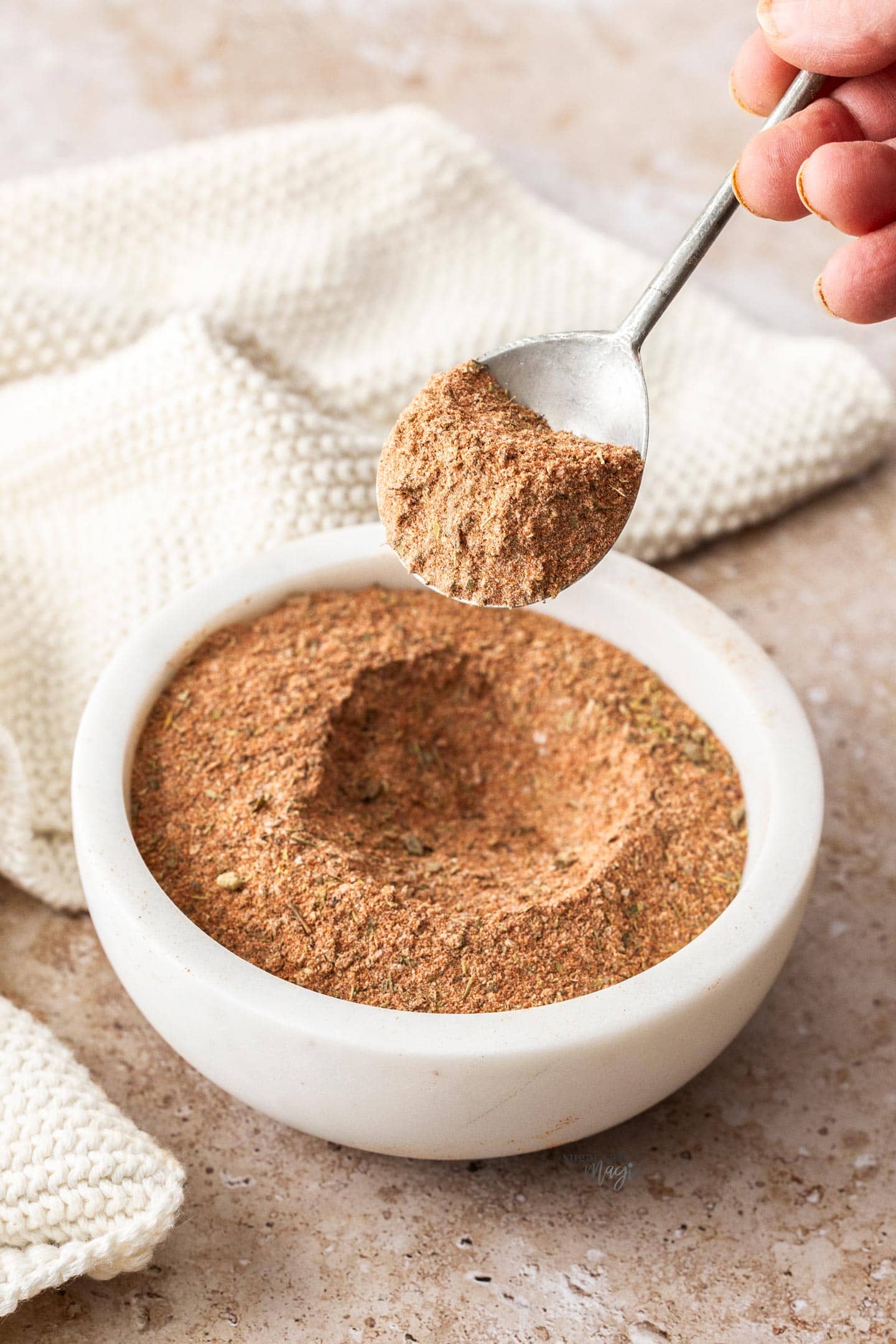
Detailed quantities and instructions in the recipe card below.
- Gather your ingredients. Measure out the spices and place them all in a small bowl. If you prefer a powdered Cajun spice mix, you can place the seasonings into a spice grinder to grind them.
- Mix and store. Mix the seasonings so that they are well combined (or grind if desired). Store your homemade Cajun seasoning in an airtight container (like a glass jar), then place in your pantry or another cool and dark place in your kitchen.
Ways to use Cajun seasoning
The possibilities are truly endless! Try these options with your batch of cajun spice mix.
- As a dry rub on roasting cuts and whole chicken.
- Seafood loves Cajun spice: On prawns (shrimp), dusted over fried calamari, or rubbed over white fish fillets (especially thick firm fish) and salmon.
- Sprinkle over steak or chicken before pan-frying.
- Rub it over ribs before baking — so good!
- Use it to season wings and serve with a dip like my jalapeno mayo.
- In rice: You can add it to your rice as it steams or add it to pan-cooked rice like paella-style rice, or my arroz rojo.
- Add it to pasta dishes like my spicy chicken pasta.
- Sprinkle over nuts or chickpeas before roasting for a spicy snack.
- Add it to soups: Either mix it right in to spice up tomato soup, for instance, or simply sprinkle a little over top as a garnish that brings a touch of added flavour.
- A classic flavouring in gumbo and jambalaya.
- Dust halloumi before frying, then add it to an amazing salad.
- Add it to croutons for Cajun croutons.
- Add it to cream cheese and sour cream for a delicious dip.
- Add it right into mince (ground meats) right before turning it into burger patties.
- Sprinkle it over oven fries before baking or even on roast potatoes.
- Slather your cooked corn on the cob with butter, then sprinkle some Cajun spice mix on top.
FAQs
You can expect to see the same types of spices used across several different Cajun seasoning recipes. Mine is quite traditional, featuring the classic combination of paprika, garlic, onion, pepper, oregano, thyme, basil, and cayenne pepper.
While these two seasoning blends are often compared, they are in fact very different.
Cajun seasoning mix originated in Louisiana, New Orleans in the United States, the home of Cajun cuisine. It’s robust and savoury and features a hint of heat thanks to the addition of cayenne pepper.
Old Bay comes from the Chesapeake Bay region of the United States. It’s most often used in seafood dishes and is made with celery salt, mustard, paprika, bay leaf, red pepper flakes, and a handful of other spices. It’s quite zesty and spicy due to the red pepper flakes.
Yes. If you’re conscious of your sodium intake, feel free to leave out the salt. Adjust the other spices to keep your desired flavour balance. Keep in mind that salt does help to enhance the overall taste, so you may need to salt your dishes separately when using a salt-free Cajun seasoning recipe.
When properly stored it will stay fresh for several months. Make sure to keep it in a cool, dry, and dark place like your pantry or cupboard. That said, for the best flavour and potency, try to make small batches that you know you’ll use within a few months.
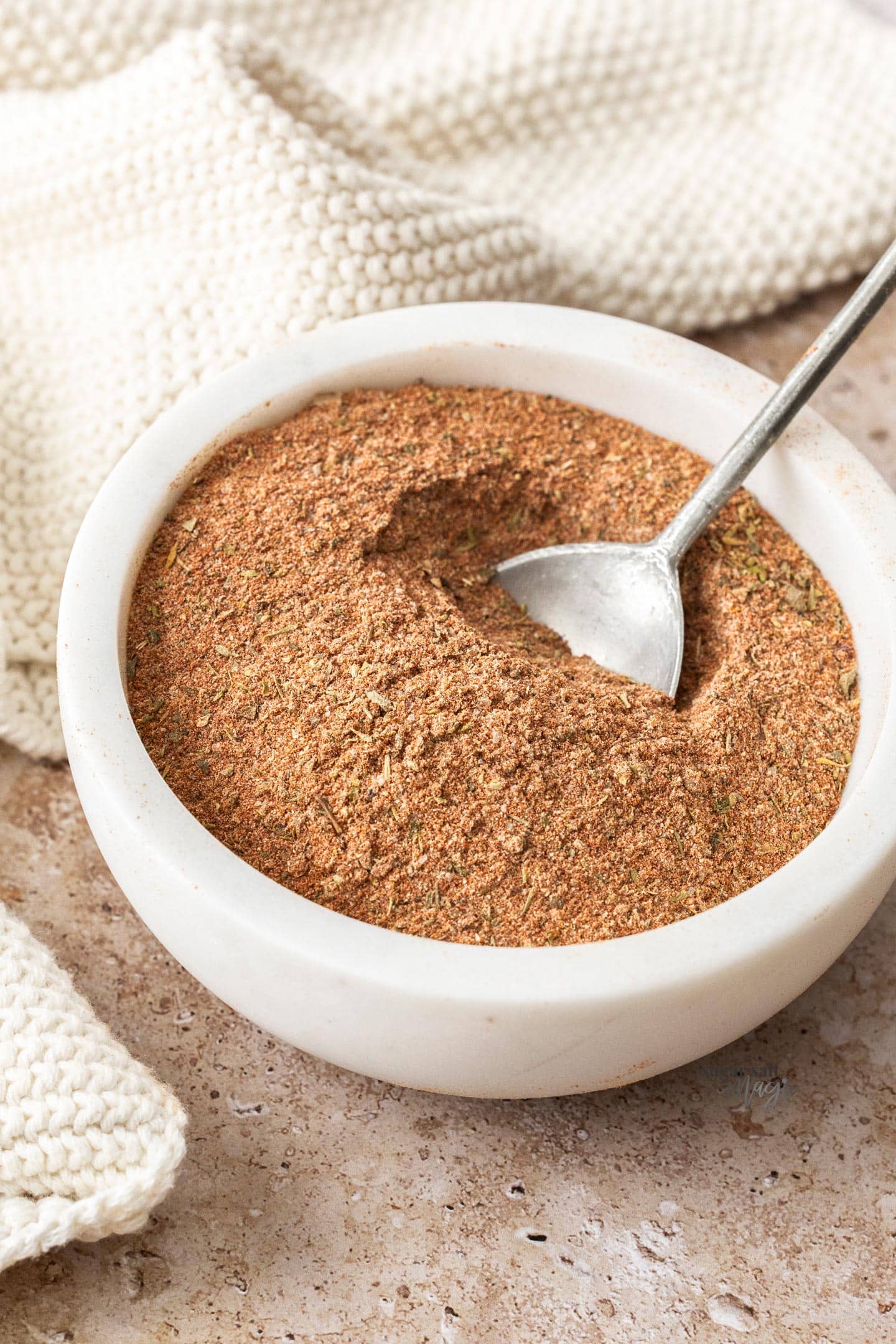
More recipes you’ll love
Did you try this recipe for Cajun seasoning?
Leaving a rating and comment below the recipe is so helpful!
Hungry for more? Subscribe to the newsletter for free recipes straight to your inbox. Also, follow along on Facebook, Pinterest and Instagram.
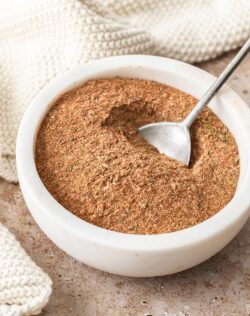
Ingredients
- 8 teaspoons paprika
- 5 teaspoons ground white pepper
- 5 teaspoons onion powder
- 4 teaspoons salt
- 3 teaspoons garlic powder
- 3 teaspoons dried oregano
- 2 teaspoons dried thyme
- 3 teaspoons dried basil
- 1-2 teaspoons cayenne pepper to taste
For best results, always weigh ingredients where a weight is provided
Equipment
- Spice jar with tight fitting lid
Instructions
- Place all the spices into a bowl and mix well to combine. If you want just a powder, place in spice grinder and grind so that all the herbs are ground as well.
- Store in an airtight jar, preferably in the pantry, and use within 3 months for best flavour.
- Please take a moment to leave a comment & rating. It's appreciated and so helpful.
Notes
- Tablespoons: I use a standard Australian 20ml tablespoon (equal to 4 teaspoons). Check yours before measuring.
- Yield: This recipe yields about ⅔ cup.
- Serving size is based on 1 tablespoon per 500g/1lb of meat.
This post may contain affiliate links that earn me a small commission for my referral, at no extra cost to you. Thank you for supporting Sugar Salt Magic.

